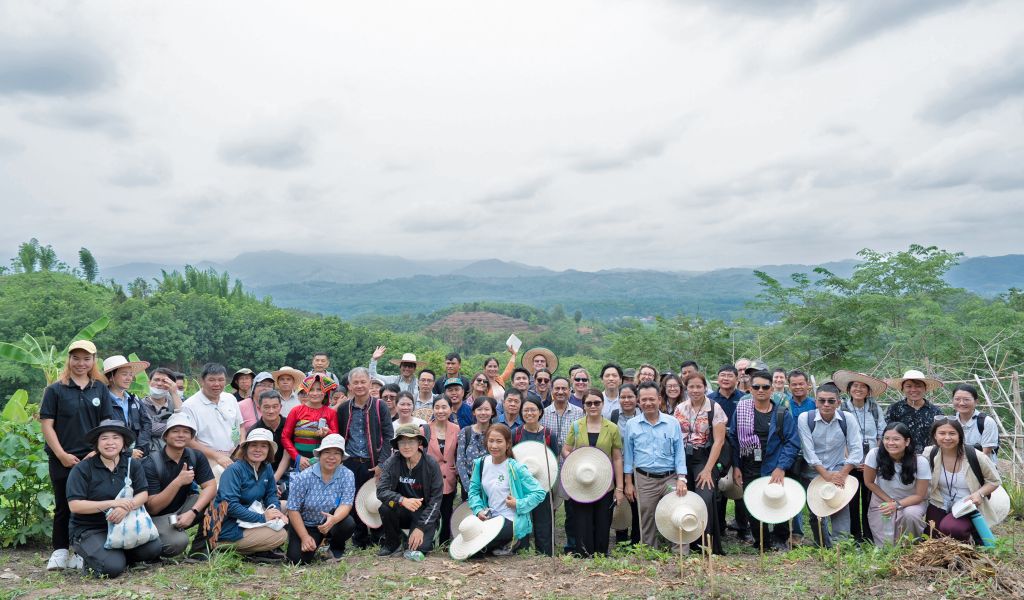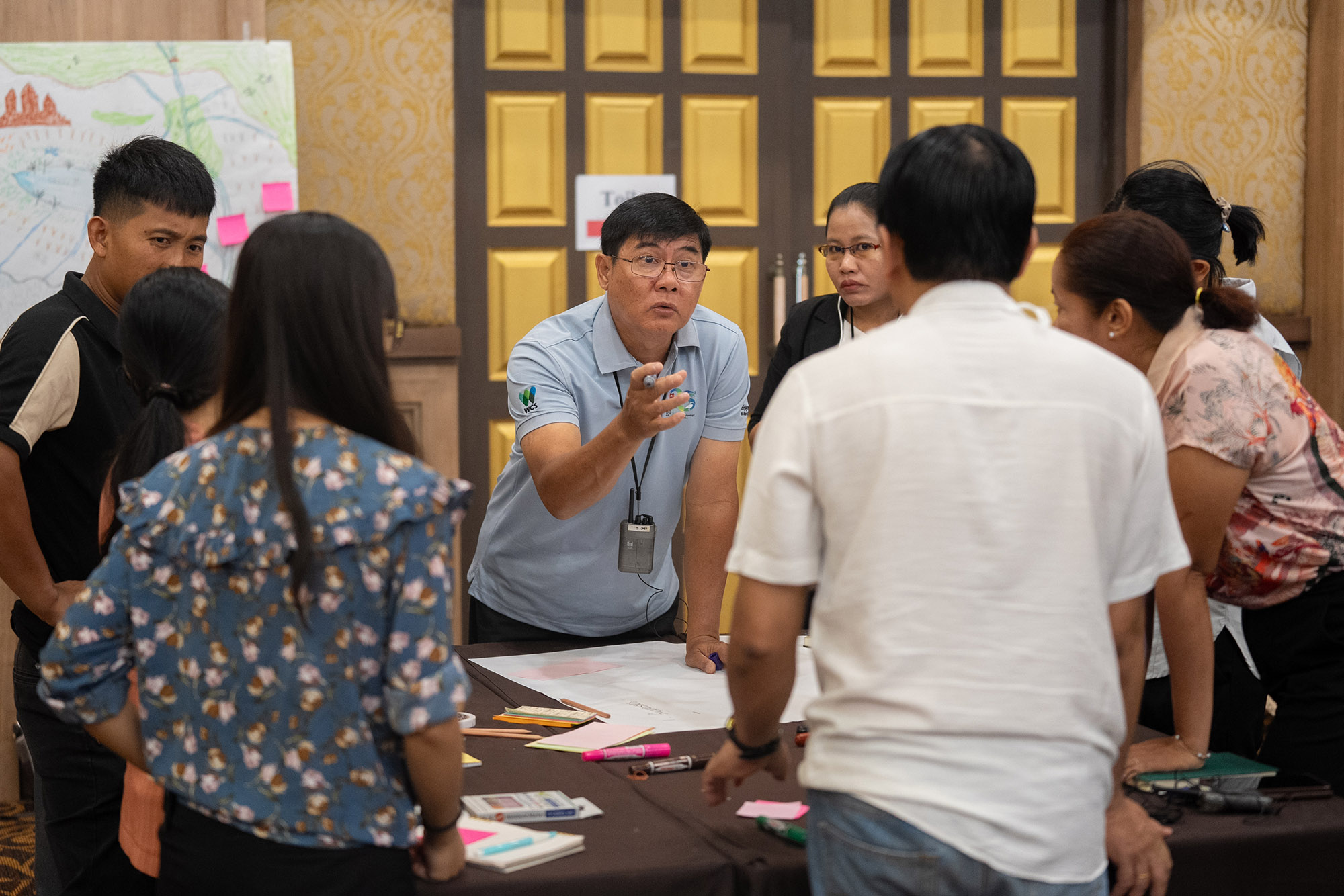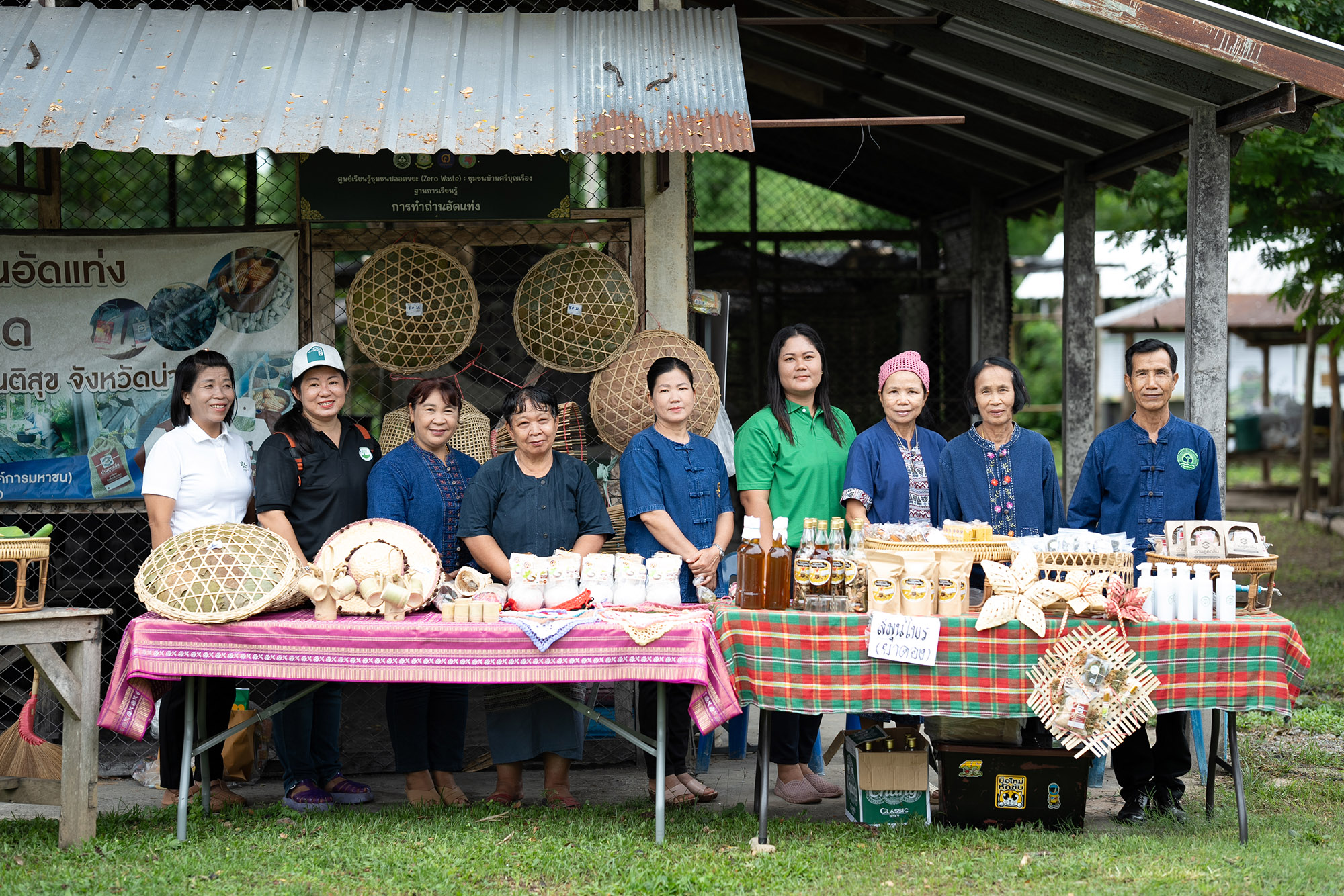Exploring the true value of forests in Southeast Asia

The true value of forests in Southeast Asia is multilayered and multifaceted. From 30 to 31 May 2024, close to 60 participants from Cambodia, Lao PDR, Thailand and Vietnam came together in Nan province, Thailand to participate in a dialogue on the significance of forests. This Southeast Asia event, part of the global Wyss Academy Dialogues series on the True Value of Forests, created a safe space for diverse perspectives to be shared and heard. It underscored the importance of the region’s forests to its people and shone a light on the shared values individuals and communities across the world ascribe to their forests.
Traversing the Amazon, Southeast Asia, Europe and Africa over the course of a few weeks, the Wyss Academy Dialogues were about sharing, listening and learning. “We need to build bridges and break silos, and these dialogues are meant to create safe spaces for different sectors to come together,” said Tatjana von Steiger, Head of Global Policy Outreach at Wyss Academy for Nature as she addressed the Southeast Asia dialogue attendees on the first day of the event.
The profound connection local communities have with their forests was repeatedly highlighted over the course of the two-day dialogue – during group interactions and exercises, and a visit to a field site in Santisuk district, where a nature-based solution site is being piloted as part of the Trees4All project. Participants often referred to the forest as their “mother” and “provider” as well as their “bank” and “supermarket”. It became clear that forests are not just seen as a source of livelihood but as an integral part of cultural heritage.
Distinct roles and unique values
Participants stated that they want to protect their forests and that they need government support to do so. It also became clear that they see communities and NGOs as playing pivotal roles in the forest protection, conservation and restoration dynamic. Strengthening livelihoods and promoting sustainable practices while addressing the larger climate and biodiversity crises requires a multi-faceted approach.

Other groups have similarly interconnected but distinct roles to play. Local governments, acting as intermediaries between national policies and community needs, are in positions to align forest conservation efforts with the priorities of those who live closest to the land. Researchers bring insights into the intricate workings of forest ecosystems. However, translating these scientific findings into actionable strategies that benefit both the environment and local populations is not without its challenges.
Business investors, often driven by economic interests, see forests as reservoirs of resources. If managed responsibly, this perspective presents opportunities for sustainable development – although it also presents real possibilities for exploitation. Maintaining the health of vital forest ecosystems while enabling forest communities to thrive requires striking a balance between economic growth and ecological preservation. For conservation strategies to be equitable, it is also equally important to bridge the gap between scientific research and practical implementation.
Envisioning forest futures
During one of the sessions, participants envisioned futures for forests in their respective countries: Cambodia envisioned community involvement and support from global mechanisms and initiatives leading to significant reforestation efforts. In Lao PDR, good forest management was seen as the way forward to increasing forest cover while deriving economic benefits. Thailand, similarly, envisioned an integrated forest management system that balances rural and urban needs. In their vision for Viet Nam, communities put forests at the heart of ecotourism, characterized by improved management leading to diversified income sources for local communities.
Regionally, there was a call for transboundary collaboration and the use of technology to monitor forest cover and implement landscape-level solutions. The importance of collaboration among various stakeholders, including local communities, governments, NGOs and researchers was also emphasized. As the dialogue concluded, participants reflected that protection and conservation are not possible unless neighbours collaborate with each other. The dialogue, they noted, created space for the group to realize something together.
Living, interconnected systems
The sheer diversity of the values associated with forests – from the purely utilitarian and economic to the cultural and spiritual – underline the necessity of a holistic approach to forest management and conservation. During the field visit to the Trees4All project site in Santisuk, a farmer member of the project, Boonlerm Sirimoon, said, “Forest is life. Without it, we cannot live. In Nan, our beliefs and culture are close to nature. We pay respect to the forest and the river.”

Throughout the dialogue, participants recognize forests as living, complex and interconnected systems, vital for both human and non-human life. The need to build a collective path, weave together collaborations and initiatives, and share stories that exemplify the values of our forests was stressed time and again. This collective message, reflecting the shared vision and commitment of the participants, will add to future dialogues on the true value of forests.
###
This story was originally published by the Wyss Academy for Nature and is part of the Wyss Academy Dialogues on the True Value of Forests.
RECOFTC’s work is made possible with the support of the Swiss Agency for Development and Cooperation and the Government of Sweden.

